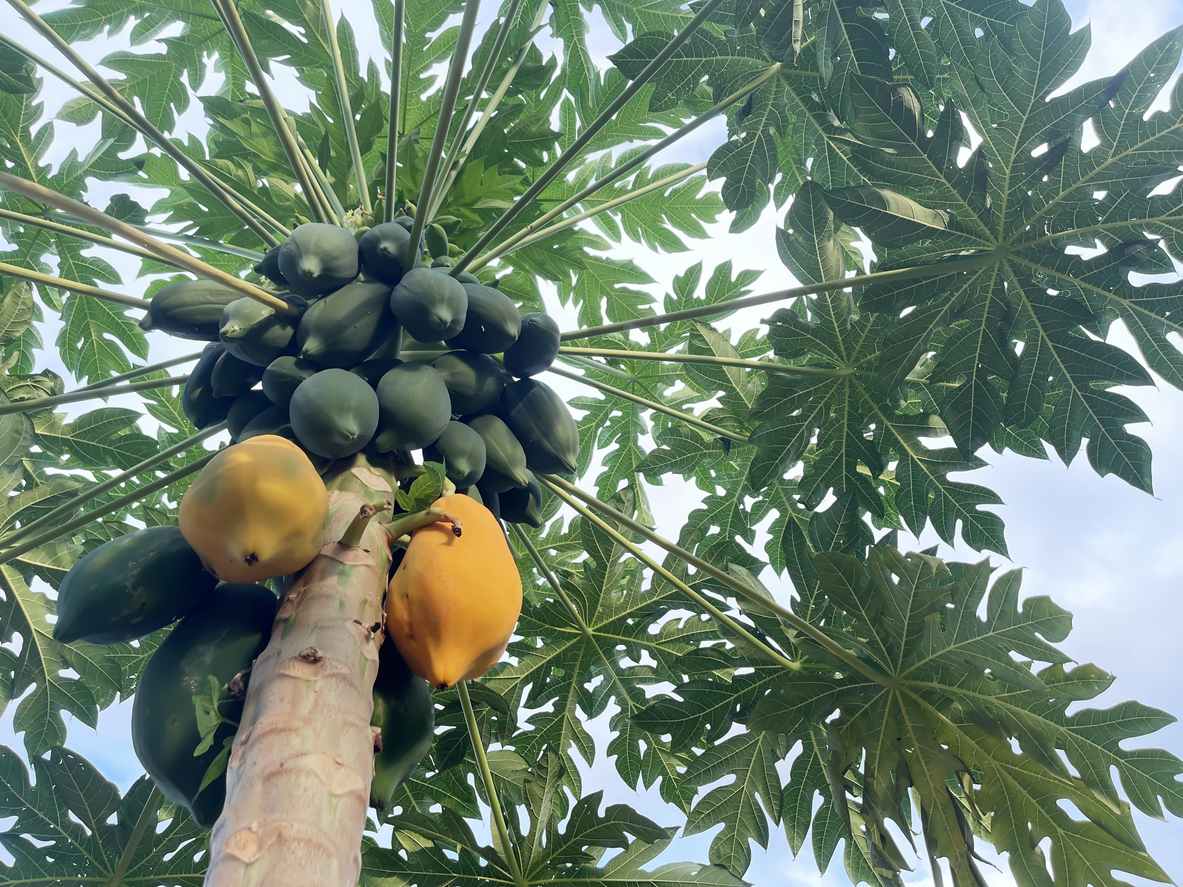
Gene Editing of Papaya Using Cas9 and Cas12a
May 28, 2025| |
Scientists from the University of Hawaii reported the successful use of two CRISPR systems, Cas9 and Cas12a, in editing papaya to address biotic and genetic variation problems. The preprint of their findings is published in BioRxiv.
To deliver the CRISPR systems with two papaya genes, CpPDS and CpMLO6, the researchers used an optimized protocol of Agrobacterium-mediated transformation of embryogenic callus suspension cultures derived from hypocotyls. Five plasmid constructs were transformed, and each expressed one or two guide RNAs for gene editing using either Cas9 or Cas12a. These steps led to all except two T0 transgenic plants exhibiting mutations, with the majority containing indels of over 90%.
The successful mutation of the CpPDS gene using both Cas9 and Cas12a was manifested by albino characteristics caused by disrupting a gene for carotenoid production. Successful mutagenesis was attained with seven out of eight gRNAs. Homozygous and/or biallelic mutants were successfully created through transformation using all five constructs, which indicates that obtaining transgene-free homozygous segregating mutants through selfing in the second generation is feasible.
With the findings reported, the researchers concluded that the gene editing system developed for papaya was reliable and efficient for genetic modification in different genomic scenarios and meeting the needs for crop improvement.
Read the abstract for more details.| |
You might also like:
- Papaya (Carica papaya) GM Events
- Pocket K No. 54: Plant Breeding Innovation: CRISPR-Cas9
- Video: Hawaii GMO Papaya Real Solutions Real Lives
Biotech Updates is a weekly newsletter of ISAAA, a not-for-profit organization. It is distributed for free to over 22,000 subscribers worldwide to inform them about the key developments in biosciences, especially in biotechnology. Your support will help us in our mission to feed the world with knowledge. You can help by donating as little as $10.
-
See more articles:
-
Plant
- Texas A&M AgriLife Scientists Find New Defense Against Hard-To-Treat Plant Diseases
- Kenyan Farmers Seek Financial Assistance in Adopting Bt Cotton
- Revised Regulations on the Protection of New Plant Varieties Released in China
- GM Rice Shows Enhanced Resistance to Salinity Stress
- Australian OGTR Receives License Application for Commercial Release of GM Purple Tomato
- EFSA Releases Assessment of GM Oilseed Rape MON 88302
- Experts Support Product-Based Regulatory Approach for GMOs
-
Food
- ISAAA Announces New Dates and Venue for ASCA8: Event Relocates to Manila in September 2025
-
Read the latest: - Biotech Updates (June 4, 2025)
- Gene Editing Supplement (May 28, 2025)
- Gene Drive Supplement (February 22, 2023)
-
Subscribe to BU: - Share
- Tweet

